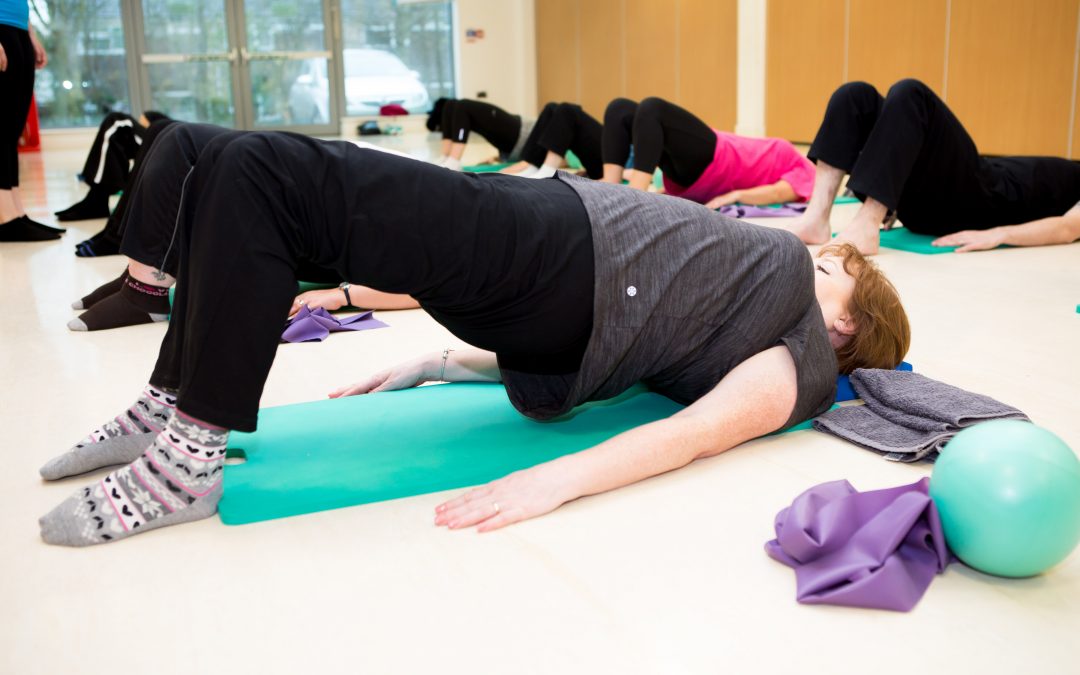If I had to pick just one favourite Pilates exercise, I think it would have to be the Shoulder Bridge.
I love teaching the Pilates Shoulder Bridge and practicing myself. It’s included in almost all of the Pilates classes I teach each week, for beginners and the more experienced. Here’s why:
Strength
It improves muscle strength in the back of the legs (especially the gluteus maximus) and the deep abdominal muscles. These are all important muscles that help to support the spine.
Stability
It improves core stability and pelvic stability. The deep lying abdominal muscles need to be used to peel the spine away from the floor whilst keeping the shoulders relaxed and avoiding the ribcage faring.
Mobility
It mobilises the spine by using segmental control. Each bone of the spine peels away one by one in order to create movement in between the discs of the spine. There’s flexion in the lumbar spine (lower back) which is helpful for people who tend to over-arch. Then there’s extension in the thoracic spine (upper back) which is good for people who have an office-based job and tend to hunch forward.
Lots of variations
There are so many variations to keep this exercise interesting and challenging. Placing your hands across the chest, adding an arm lift, heel lift, knee lift, holding a ball etc. It’s also great for beginners as they can start by lifting just a little off the floor and then over time start to lift higher.
Diagnostic Tool
I can often see any muscles imbalances when a person does a Shoulder Bridge. I can see if the weight is even in their feet or if their toes lift. I can see whether their knees fall out to the side and if they can keep their pelvis level when lifting an adding a heel lift.
If you only have a few minutes a day to practice an exercise at home, this one should be top of your list!

